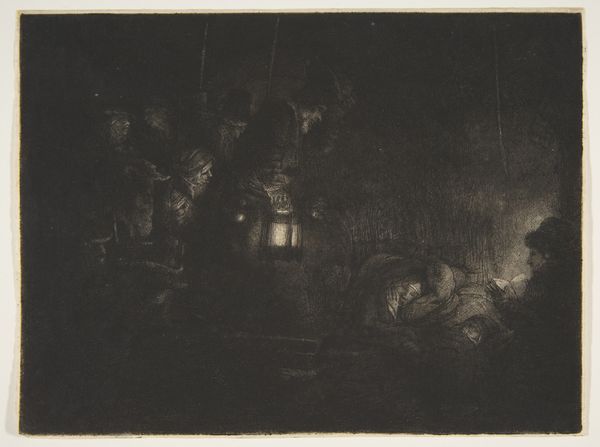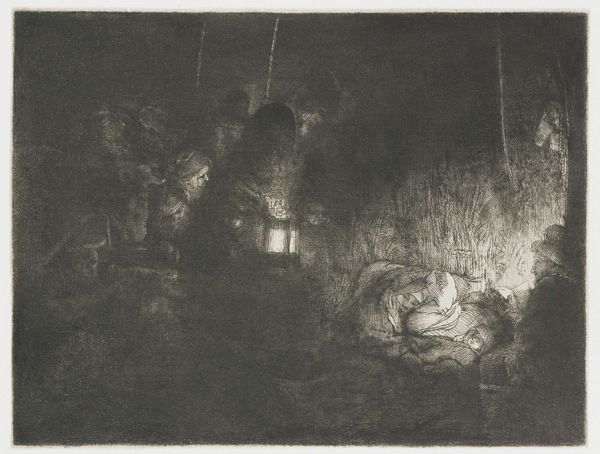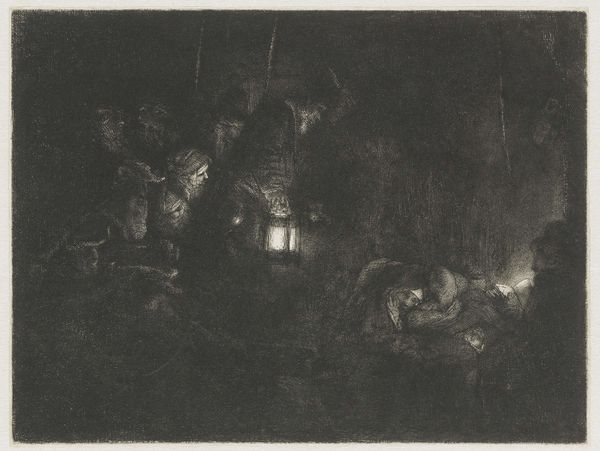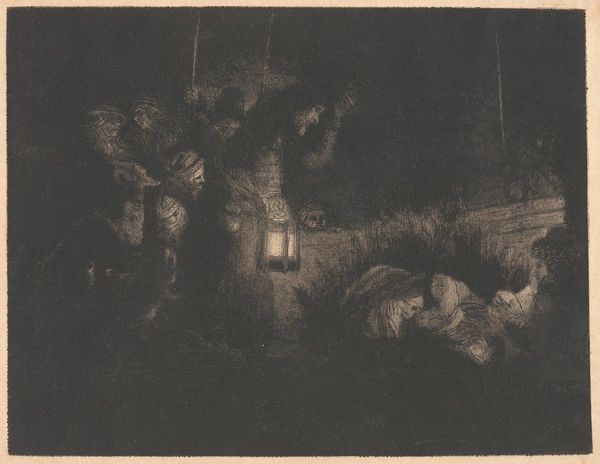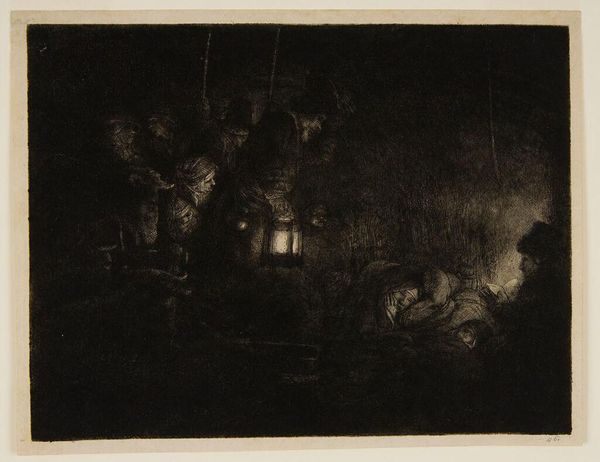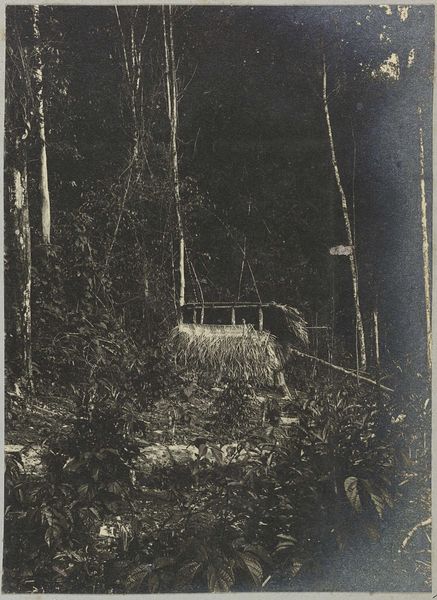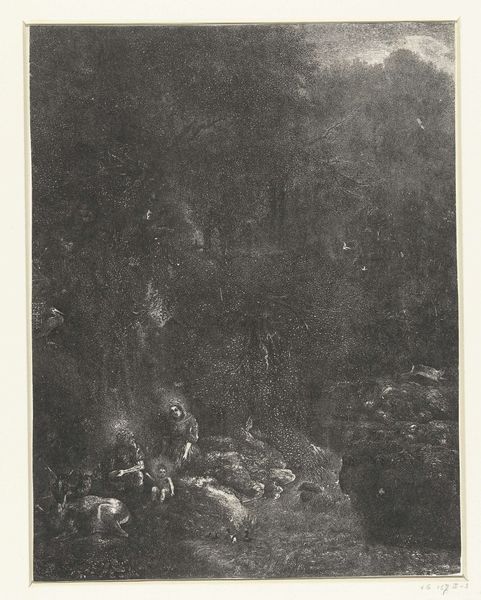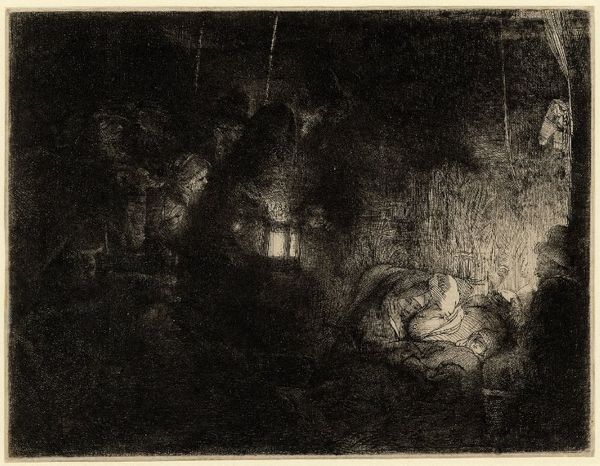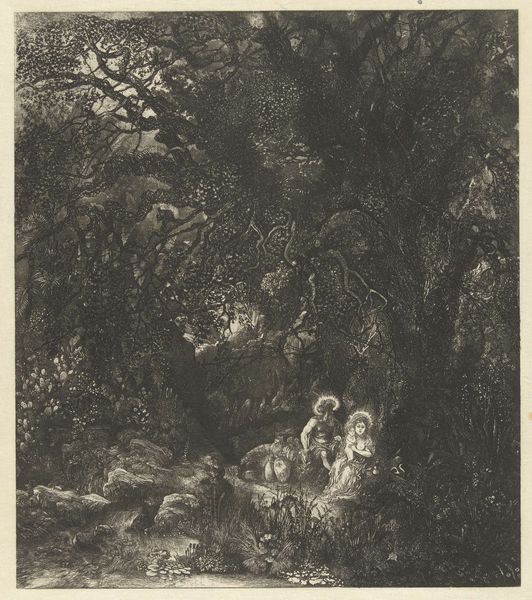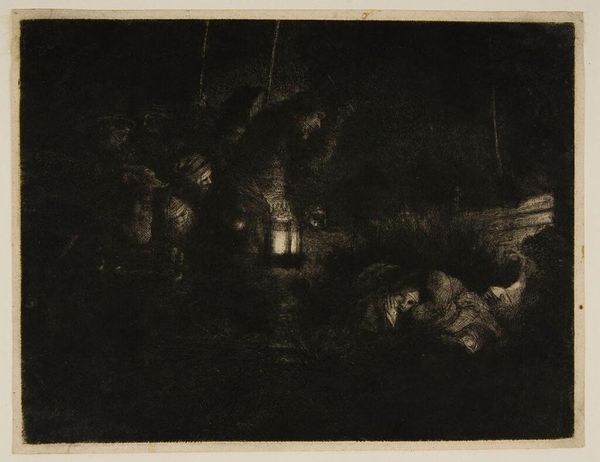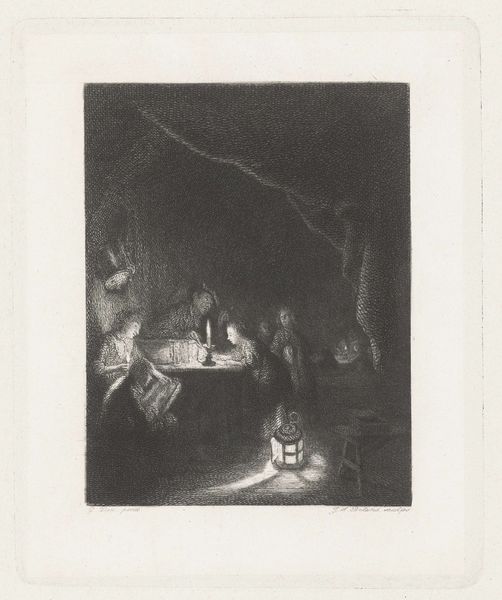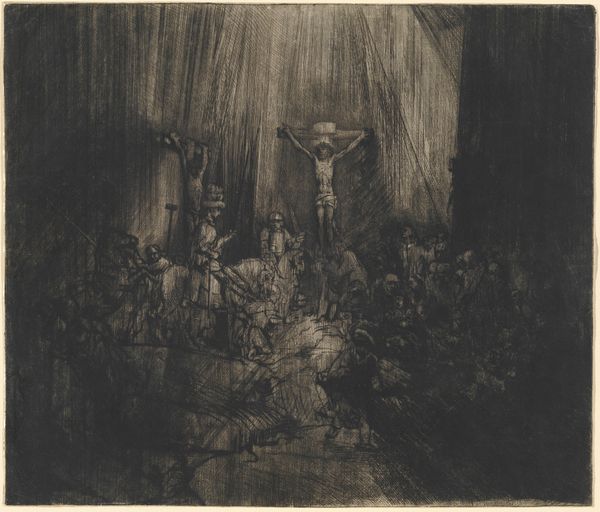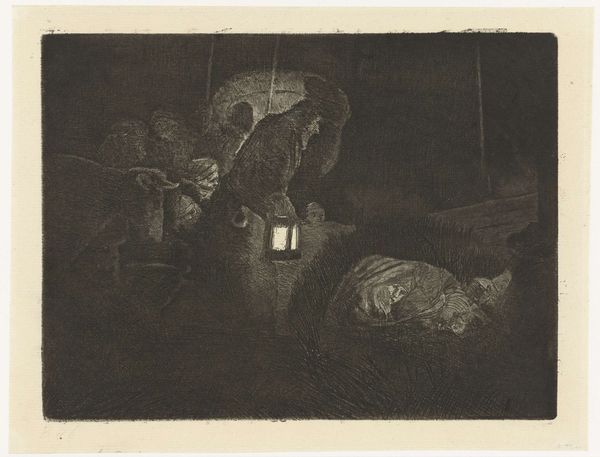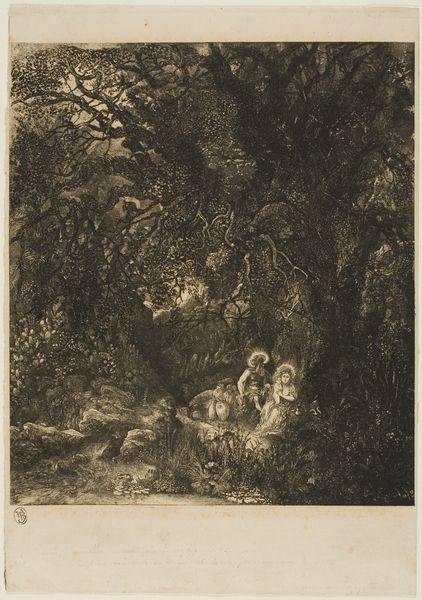
print, etching
#
narrative-art
#
baroque
# print
#
etching
#
landscape
#
chiaroscuro
Dimensions: height 147 mm, width 197 mm
Copyright: Rijks Museum: Open Domain
Curator: Here we have Rembrandt van Rijn's etching, "The Adoration of the Shepherds: A Night Piece," from around 1657, housed here at the Rijksmuseum. Editor: The drama in the use of light and shadow is captivating. It’s like peering into a sacred, secretive world illuminated by faith. Curator: Absolutely. Rembrandt uses the etching process to its full potential. Look at the varying line weights and the density of the hatching; these are crucial to create that sense of depth and texture within an almost exclusively dark composition. Consider the physical labor involved in creating the plate; the artist manipulated the copper, using different tools to get subtle nuances of darks and lights. Editor: That light emanating from the lantern... it's not just light, it’s hope. Symbolically, it represents divine enlightenment entering the earthly realm of the shepherds. Their faces are rendered with such emotive intensity—you can feel their awe. Curator: Indeed. But also consider that the printmaking trade during Rembrandt's time was increasingly market-driven. Religious subjects catered to a wide audience seeking solace or connection through readily available and relatively inexpensive artwork. The narrative itself would be extremely familiar, allowing Rembrandt to focus on formal and expressive qualities to move the image from just illustration to personal expression. Editor: That interplay between light and dark reinforces the core theme—the contrast between the humble setting of the birth and the overwhelming significance of the event. There's a definite tension, the sacred and the mundane existing side-by-side. Curator: The intentional blurring of background elements directs focus while suggesting mystery. It is masterful use of tonal variation pushing against the capabilities of his medium and equipment. This adds a tangible atmosphere to the etching, allowing viewers to consider how these items shape religious narratives and our encounters. Editor: Thinking about the symbols woven into this, the shepherds themselves represent humanity’s receptivity to the divine message. The adoration depicted transcends religious confines, illustrating human emotions toward revelation across faiths. It’s universal, isn't it? Curator: It is quite special to witness the ingenuity through artistic interpretation of both medium and established thematic narratives of the era, I must agree. Editor: Indeed. It shows that great artists have to learn to speak two languages fluently to transmit their message to the world.
Comments
No comments
Be the first to comment and join the conversation on the ultimate creative platform.
